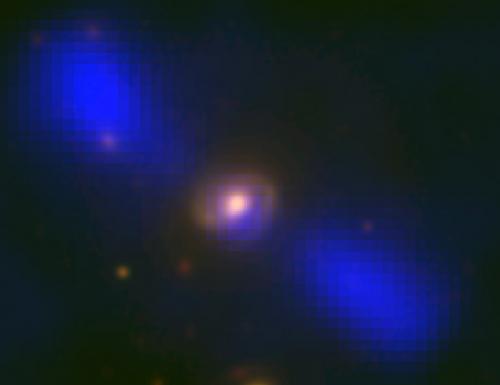Newly found galaxy may provide insight into how galaxies developed in early Universe
 Washington, Dec 03 : Astronomers have recently found a significant new example of a very rare type of galaxy that might provide imperative insight on how galaxies were developed in the early Universe.
Washington, Dec 03 : Astronomers have recently found a significant new example of a very rare type of galaxy that might provide imperative insight on how galaxies were developed in the early Universe.
The new discovery technique promises to give astronomers many more examples of this important and mysterious type of galaxy.
The galaxy they studied, named J1649+2635, nearly 800 million light-years from Earth, was a spiral galaxy, like Earth's own Milky Way, but with prominent "jets" of subatomic particles propelled outward from its core at nearly the speed of light. The problem is that spiral galaxies are not supposed to have such large jets.
J1649+2635 is only the fourth jet-emitting spiral galaxy discovered so far. The first was found in 2003.
Jets such as those seen coming from J1649+2635 are propelled by the gravitational energy of a supermassive black hole at the core of the galaxy. Material pulled toward the black hole forms a rapidly-rotating disk, and particles are accelerated outward along the poles of the disk.
The collision that presumably forms an elliptical galaxy disrupts gas in the merging galaxies and provides "fuel" for the disk and acceleration mechanism. That same disruption, however, is expected to destroy any spiral structure as the galaxies merge into one.
J1649+2635 is unusual not only because of its jets, but also because it is the first example of a "grand design" spiral galaxy with a large "halo" of visible-light emission surrounding it. (ANI)